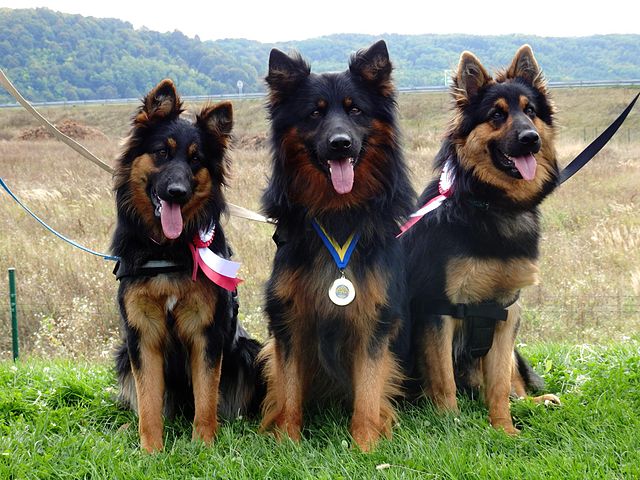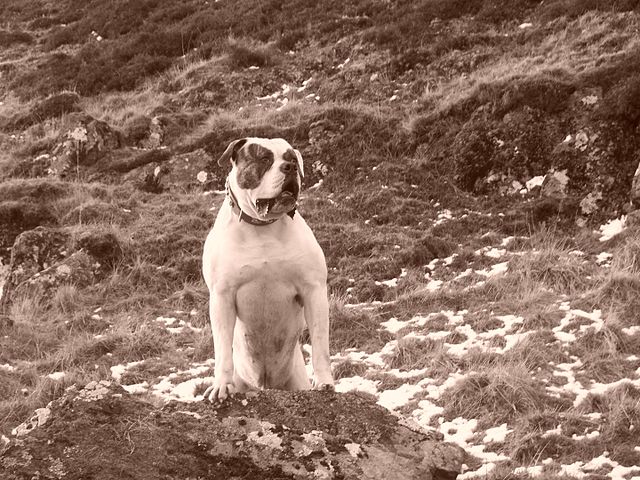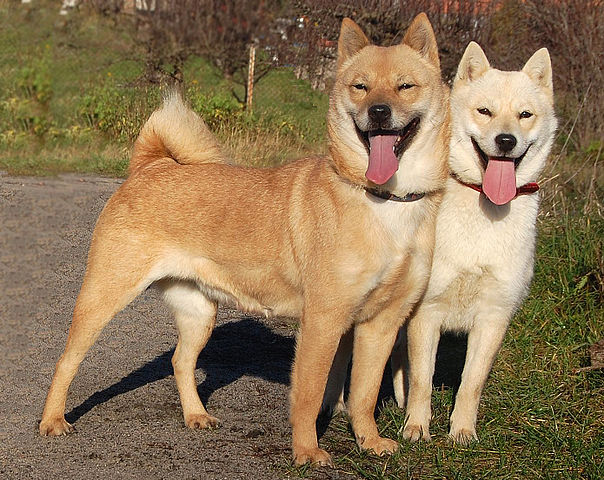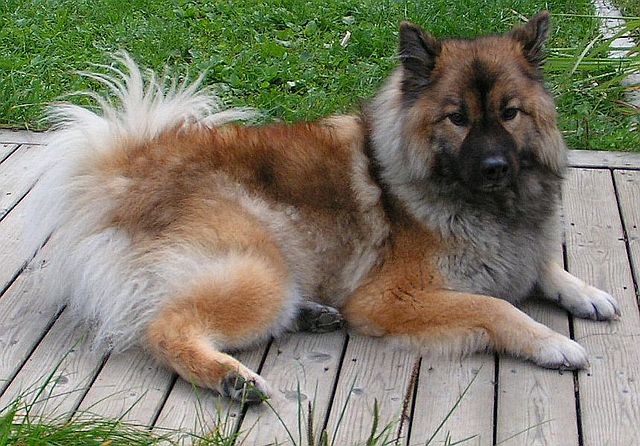The Bohemian Shepherd was originally created to patrol the borders of Bohemia and Bavaria back in the 1300’s. First used as a guard dog, and then as a herding dog, they were constant companions of the people who lived and worked in the area. The breed as we know it today may have some of the original lineage still intact, or it may be a complete recreation – depending upon who you ask. Either way, today this breed is lively and athletic, and up for almost any task that can be thrown at him! The versatile Bohemian is also loyal and outgoing, great with children and an all-around awesome companion in the right home. Good with other pets, outgoing and attentive… he gets high scores in a number of different arenas!
Although they do require exercise, Bohemians are definitely capable of chilling out at home. They do enjoy being given tasks but aren’t quite as obsessive or high energy as other similar breeds. They are considered a medium energy dog with a generally docile temperament. While they can be happy with “just” an enriching family life, they do need some sort of job to stay happy and fulfilled. Besides, it would be a shame not to get this brainy fellow into a sport or two (both for his enjoyment and yours!) What types of activities can this dog do? A better question would be what can’t he do? Agility, schutzhund, nose work, herding, therapy work, coursing, endurance tests, freestyle, search and rescue, tracking, obedience, service dog work, dock diving… the list goes on and on.
Bohemian Shepherds are a joy to train and tend to learn very quickly! They enjoy a challenge and are often up for learning advanced commands as well as getting involved in various jobs/tasks/sports. Some are slightly sensitive so make sure to keep heavy, unfair corrections at bay. They also tend to do better when the trainer “mixes it up” and keeps them on their toes as otherwise they might become bored – a trait of intelligent dogs. Another plus – unlike many other high performing breeds they definitely have an off switch and can easily go from intensive training to rest time fairly quickly.
While he looks similar to the German Shepherd Dog at first glance, the Bohemian Shepherd is older and possibly even one of the predecessors of the GSD. Smaller than the GSD, with a more level back and a longer coat, it only takes a second to tell the difference once you know what you are looking for. In addition, the small fluffy ears are a distinctive breed trait and they give a different overall appearance. Health-wise, he is also generally healthier with less inherited issues. Average lifespan is 12-15. Finally, this breed is generally easier for novice owners as he has a softer temperament and lower drive in general. Make no mistake, however – like all dogs he still needs plenty of attention, exercise, care and training! 
While they may seem too good to be true, like all breeds Bohemian ownership does come with some caveats. First, while they aren’t known for being problem barkers they can become destructive if their needs are not met or they are left alone for too much of the day. Second, their herding instincts may mean they can nip at heels and try to herd people and/or kids. Finally, this is a rare breed that can be very difficult to find. Expect to wait awhile for a puppy, and be prepared to have to import your new friend!
Grooming is a simple chore for the Bohemian, only requiring a good brush-out once or twice a week (not counting nails, teeth, or other maintenance grooming). There is no special trimming or clipping required. The double coat (which is always black and tan) tends to shed dirt, so baths only need to be done occasionally. The coat is protective and helps the dog stay warm in cold weather.
The Bohemian can make a good watchdog as he will alert to people entering the property. He can be kept outside in a yard (if given enough attention by the family – he doesn’t like to be alone all day), and will definitely raise the alarm from inside the fence. This said, when out in public he is generally friendly toward strangers. This breed can also live in an apartment setting and can usually learn to tell the difference between strangers and neighbors. This is definitely a rare breed worth checking out!




![By Tesori di Carli - [1], CC BY-SA 4.0, https://commons.wikimedia.org/w/index.php?curid=42936993](https://academichound.com/wp-content/uploads/2020/06/Czechoslovakian-Vlcak.jpg)




